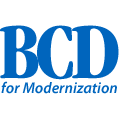LDAP and Active Directory make it easier for site administrators to manage users and can improve the user experience.
Business Computer Design, Int’l Inc. introduced V4 of Nexus Portal at COMMON. The new version includes support for LDAP, complete cross-browser support, restructuring of the underlying CSS and JavaScript code, and improvements in password handling and the install process.
The powerful user management features in Nexus play an important role in its ability to make enterprise information easier to access and to manage securely on the Web. V4 of Nexus now supports authenticating users against LDAP and Active Directory which makes it even easier for site administrators to manage users and improves the user experience. Many organizations now use LDAP, a cross-platform client-server protocol, to store and authenticate user IDs and passwords as well as to query and modify other information. The addition of LDAP now gives administrators three ways to authenticate users in Nexus, the first two being IBM i and Nexus user profiles.
Users can now employ the same profile to log in to Nexus as they do to log in to other LDAP-supported resources. LDAP users can either be created automatically as they log in, or they can be added by the site administrator. After they are added, they can then be assigned permissions to content in Nexus and be assigned to Nexus groups. Site administrators of organizations who use LDAP no longer need to manage separate LDAP and Nexus profiles and can now disable profiles from the same place.
Complete Cross-Browser Support and Restructuring of CSS and JavaScript
Cross-browser support has become very important for any Web solution with the popularity of Firefox and the increasing market share of Chrome. The user interface of Nexus has been supported in those browsers for a while now and in Nexus 4, the site administration interface is also supported. This was done by increasing the Web standards compliance of the HTML, CSS and JavaScript in Nexus.
The underlying CSS and JavaScript code has also been restructured to make it easier to extend Nexus sites. The JavaScript has been simplified and reorganized into fewer files and jQuery, the most popular JavaScript library, is now used extensively in Nexus and can be extended by developers. A new style sheet model has been introduced that is more intuitive and again makes it easier to customize your site. These changes also improve page-load speeds.
Better Password Handling and Install Process
Password security is improved in Nexus 4 with better encryption handling, and users now have the ability to change their IBM i user profile passwords from the Nexus login screen. Nexus administrators can control the number of days in advance to start displaying the password expiration warning message. The installation process has also been improved by simplifying the installation of concurrent Nexus sites by making the install faster and by reducing the steps needed to configure Nexus.
Availability and Licensing
Nexus Portal V4 is now available. Users can request a free 30-day evaluation at http://www.bcdsoftware.com. For more information, call BCD at 630-986-0800, or write to
The complete Nexus Portal is offered at no charge. This license includes the ECM, SmartCharts, and all other Nexus components, and is an unlimited number of users. The licensee agrees to pay an annual maintenance fee starting at the time Nexus is initially licensed. Nexus runs on existing IBM i components and does not require additional middleware. For existing users, upgrading to Nexus 4 requires a new license key, which needs to be entered during the upgrade process; contact BCD for the new key.
What Does Nexus Portal Do?
As an IBM i-hosted Web Portal solution, Nexus Portal facilitates fast, secure, and organized access to enterprise information through Web browsers. Nexus Portal assembles applications and documents, organizes content, and consolidates security and user information. It helps you fully support your organization’s Web implementation and furnishes the framework to administer the portal.
An important component of Nexus is the ECM (Enterprise Content Manager). The ECM is a secured IBM i-centric repository for uploading, searching, managing, and storing documents of all types within your Nexus portal and includes search and indexing capabilities.





















 More than ever, there is a demand for IT to deliver innovation. Your IBM i has been an essential part of your business operations for years. However, your organization may struggle to maintain the current system and implement new projects. The thousands of customers we've worked with and surveyed state that expectations regarding the digital footprint and vision of the company are not aligned with the current IT environment.
More than ever, there is a demand for IT to deliver innovation. Your IBM i has been an essential part of your business operations for years. However, your organization may struggle to maintain the current system and implement new projects. The thousands of customers we've worked with and surveyed state that expectations regarding the digital footprint and vision of the company are not aligned with the current IT environment. TRY the one package that solves all your document design and printing challenges on all your platforms. Produce bar code labels, electronic forms, ad hoc reports, and RFID tags – without programming! MarkMagic is the only document design and print solution that combines report writing, WYSIWYG label and forms design, and conditional printing in one integrated product. Make sure your data survives when catastrophe hits. Request your trial now! Request Now.
TRY the one package that solves all your document design and printing challenges on all your platforms. Produce bar code labels, electronic forms, ad hoc reports, and RFID tags – without programming! MarkMagic is the only document design and print solution that combines report writing, WYSIWYG label and forms design, and conditional printing in one integrated product. Make sure your data survives when catastrophe hits. Request your trial now! Request Now. Forms of ransomware has been around for over 30 years, and with more and more organizations suffering attacks each year, it continues to endure. What has made ransomware such a durable threat and what is the best way to combat it? In order to prevent ransomware, organizations must first understand how it works.
Forms of ransomware has been around for over 30 years, and with more and more organizations suffering attacks each year, it continues to endure. What has made ransomware such a durable threat and what is the best way to combat it? In order to prevent ransomware, organizations must first understand how it works. Disaster protection is vital to every business. Yet, it often consists of patched together procedures that are prone to error. From automatic backups to data encryption to media management, Robot automates the routine (yet often complex) tasks of iSeries backup and recovery, saving you time and money and making the process safer and more reliable. Automate your backups with the Robot Backup and Recovery Solution. Key features include:
Disaster protection is vital to every business. Yet, it often consists of patched together procedures that are prone to error. From automatic backups to data encryption to media management, Robot automates the routine (yet often complex) tasks of iSeries backup and recovery, saving you time and money and making the process safer and more reliable. Automate your backups with the Robot Backup and Recovery Solution. Key features include: Business users want new applications now. Market and regulatory pressures require faster application updates and delivery into production. Your IBM i developers may be approaching retirement, and you see no sure way to fill their positions with experienced developers. In addition, you may be caught between maintaining your existing applications and the uncertainty of moving to something new.
Business users want new applications now. Market and regulatory pressures require faster application updates and delivery into production. Your IBM i developers may be approaching retirement, and you see no sure way to fill their positions with experienced developers. In addition, you may be caught between maintaining your existing applications and the uncertainty of moving to something new. IT managers hoping to find new IBM i talent are discovering that the pool of experienced RPG programmers and operators or administrators with intimate knowledge of the operating system and the applications that run on it is small. This begs the question: How will you manage the platform that supports such a big part of your business? This guide offers strategies and software suggestions to help you plan IT staffing and resources and smooth the transition after your AS/400 talent retires. Read on to learn:
IT managers hoping to find new IBM i talent are discovering that the pool of experienced RPG programmers and operators or administrators with intimate knowledge of the operating system and the applications that run on it is small. This begs the question: How will you manage the platform that supports such a big part of your business? This guide offers strategies and software suggestions to help you plan IT staffing and resources and smooth the transition after your AS/400 talent retires. Read on to learn:
LATEST COMMENTS
MC Press Online